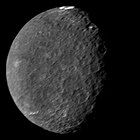User:Romney yw/MPA/3
|
Featured Picture |
|
The mortuary temple of Hatshepsut is a mortuary temple built during the reign of Hatshepsut, a pharaoh of the Eighteenth Dynasty of Egypt, around the 15th century BC. Located opposite the city of Luxor, the temple's three terraces rise above the desert floor and into the cliffs of Deir el-Bahari. Hatshepsut's tomb lies inside the same massif, capped by El Qurn, a pyramid for her mortuary complex. At the edge of the desert, one kilometre (0.6 miles) east, connected to the complex by a causeway lies the accompanying valley temple. Across the river Nile, the whole structure points towards the monumental Eighth Pylon, Hatshepsut's most recognizable addition to the temple of Karnak. The temple's twin functions are identified by its axes: its main east–west axis served to receive the barque of Amun-Re at the climax of the festival, while its north–south axis represented the life cycle of the pharaoh from coronation to rebirth. This aerial photograph shows the reconstructed mortuary temple of Hatshepsut, viewed from the southeast. Photograph credit: Diego Delso |
Umbriel is the third-largest moon of Uranus. It was discovered on October 24, 1851, by William Lassell. Named after a character in the 1712 poem The Rape of the Lock by Alexander Pope, Umbriel is composed mainly of ice with a substantial fraction of rock. It may be differentiated into a rocky core and an icy mantle. Its surface, the darkest among Uranian moons, appears to have been shaped mostly by impacts, but the presence of canyons suggests early endogenic processes. This shows Umbriel may have undergone an early endogenically driven resurfacing event that erased its older surface. Covered by numerous impact craters reaching 210 km (130 mi) in diameter, Umbriel is the second-most heavily cratered satellite of Uranus after Oberon. Like all moons of Uranus, Umbriel likely formed from an accretion disk that surrounded the planet just after its formation. The only close study of Umbriel was conducted in January 1986 by Voyager 2, which captured images of about 40 percent of its surface during the spacecraft's flyby of Uranus. (Full article...)
Recently featured:
|


